#featuring my player
Explore tagged Tumblr posts
Text

It did not, infact, spark joy.
#kingdom hearts#kh#khux#kingdom hearts union cross#kingdom hearts union x#khux player#khux ephemer#khux skuld#oof#mega hurt#featuring my player#😔 give my children a break#pLEASE#you give love a bad name by bon jovi plays in distance#player was indeed shot through the heart#and was infact to blame
43 notes
·
View notes
Text
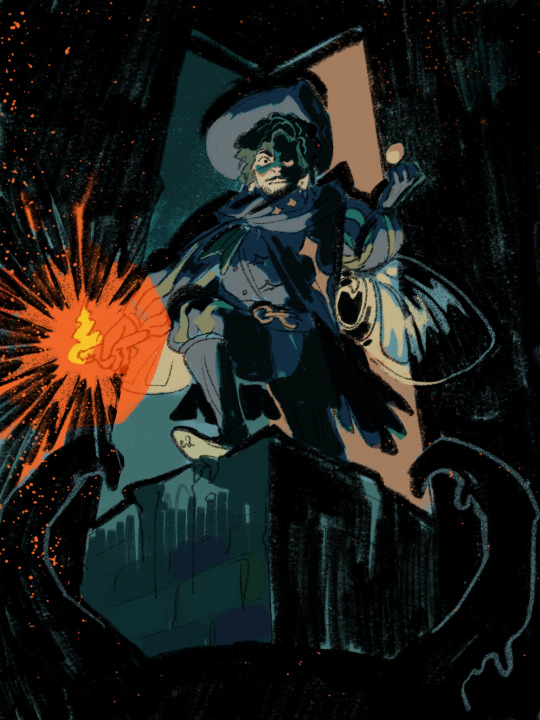
1 hr mined craft drawing before bed at 2am on a sunday what's better than this
#featuring the world's most divorced man#minecraft#fellas. this is MY minecraft skin. i am the player here. i do not consume any minecraft youtube man content
7K notes
·
View notes
Text









Bloodsucking Bastards bloopers and set pics
#pedro pascal#fran kranz#joey kern#Justin ware#Emma Fitzpatrick#Yvette Yates Reddick#bloodsucking bastards#I actually bought a blu-ray player from my laptop to rip gifs from the special features
95 notes
·
View notes
Text
Trying to absorb everything there is to know about ice hockey within the shortest amount of time possible really does strange things to a person. You come up against questions such as what do defensemen even do aside from skate backwards and do tummy time to protect their goalie? (Broadcasts aren’t the most informative) What the hell makes defensemen effective? What do the casters mean when they say “gap”? What are defensive details?
I love watching games back, I love trying to understand the game. I love hockey <3 But sometimes it’s nice to have help, and sometimes my favourite writers/podcasters collaborate!!
Here is part 1/3 of a podcast mini-series about defending, putting it here so I can have a copy of it in case it ever gets taken down + wanted to share with everyone some of my findings! (All episodes are available if anyone just wants to listen to them!) Transcript + edits done by me, all mistakes are mine.
Published 6th November 2024, Hockey IQ Podcast: Modern Defensemen (with Will Scouch) Ep #1 - by Hockey's Arsenal, hosted by Greg Revak (apple / spotify / youtube / bonus substack link)
part 2
[START Transcript]
Greg Revak: On the Hockey IQ Podcast today, we open up a new segment: we’re bringing back our favourite Will Scouch. If you’re on the Hockey IQ Newsletter you know his work by now.
Will, good morning. Earlier than most of us probably normally get up, but it’s a good day.
Will Scouch: Yeah, Greg, thanks for having me, it’s a lot of fun. Me and Greg go way back. We’re boys from years ago and I’m excited to hop on the show. I’m a keen listener, keen reader.
[They exchange pleasantries]
GR: Beautiful. Well, today we’re gonna talk about three concepts. We’re gonna break it into three spots though, so everyone’s gotta come back next week and the week after that.
We’re gonna talk about defensemen, because everyone knows they’re important but how do we actually play the position well?
WS: Yeah, I mean, it’s a position that’s still, to me, being explored; both by, I’d say youth and junior coaches and pro coaches alike. There’s a lot of different ways that you can do it.
I mean, I watch a lot of hockey from around the world, all kinds of different levels. I’ve watched guys develop from 15 to 24 at this point, and just seeing how their games evolve and everything, and how effective various versions of this position is. And I think it’s a very interesting area that’s still being explored in a lot of really interesting ways, for sure.
GR: Yeah, I think back to David Savard; he comes out of the [QMJHL] as this high-flying offensive defenseman, and if we just forgot about the rest of his career and you just saw him today as this great shutdown, defense-first player, you’d be absolutely shocked.
I mean, you think about Rasmus Dahlin — kid didn’t even play full time defenseman until his actual draft year, he was still playing forward a ton. There’s so much to be explored here.
I feel like [to get a lot of] — for you NHL fans — to get a lot of value in the later rounds out of your defensemen, take those offensive players first, and we can find a lot of hidden gems later.
WS: Well, yeah. I mean, actually, I’ve said this a few times but your listeners probably don’t know, but I did a presentation during the pandemic at the Ottawa Hockey Analytics Conference about this topic exactly; how, when you look at the numbers and the defensive value of players in the NHL, I found that there were just as many in the top 50 defensive value of players in the NHL, there were just as many undrafted players as there were second round picks, second and third round picks combined.
So the draft isn’t really a great historical gauge on defensive ability. Offense is a different story from defensive players, which we could probably get into a little bit.
But I find, personally, that evaluating defensemen and projecting defense to the NHL is still really spotty and questionable. And I don’t know, in my line of work, watching a lot of defensemen, a lot of the ones who I think are some of the better defenders kind of go a little unheralded, because a lot of the time you don’t need to be particularly noticeable to be a good defenseman, but scouts are always looking for the noticeable guys.
So it’s a very interesting world and it’s a very interesting thing to pick through, but there’s definitely a lot of case studies you could dig into, and a lot of players you could look at as cases of, “Oh yeah, nobody was really paying a whole lot of attention to them!” or maybe people were thinking about them the wrong way. But if you think about things a little bit outside the box, you might be able to see something really interesting there.
GR: Yeah, so let's dive into why that may be. Classic example would be Lane Hutson, so maybe we'll pick on him a little bit, but I definitely want to talk about Rasmus Ristolainen, because he is an interesting case study that we wrote about on the newsletter.
So where I want to start with this is just modern day defending. How are defensemen defending today versus old times? A lot of times it was the big hit, separate the head from body. The puck’s somewhere, but let's separate the head from the body, and we’ll worry about the puck later — that is going bye-bye.
Every coach I talk to now, they prefer having the puck rather than having a head on a stake. So for me, it comes back to this old saying of, “position before possession.” We're gaining body positioning, we're not so much separating head from body, but puck from player.
All right, so we've got position before possession. It's super valuable in gaining the space that you need to have first whack in a puck or put the puck where you want it, or just push it to a teammate. Just having the idea of owning space and there's no better league at this and no league that values it more than the NHL. If you don't do this well in the NHL, sooner or later, you're going to find yourself out of a job making a heck of a lot less money in a league that probably no one really cares that much about. You want to be in the show, the big lights: you have to value this more than anything.
And this is actually the one thing that I noticed about Hunter McDonald. He's in the Flyers’ system now — he was an overager, but I was like, “This guy is unbelievable!” He’s a huge frame, you can’t miss him out there. He would just get the positioning before possession, and I was like, “Okay, that’s interesting, let me watch him further.”
And I feel like he’s going to be one of those bottom of the lineup guys who, unlikely, made it out of being an overager in the [United States Hockey League], going to college for a few years, but has those little details of a defenseman that you see in modern day play, which is positioning overall, which is an NHL trait to the nth degree.
WS: No, I know. I think I would definitely agree. Those are the players that are always really, really fascinating to me because you look at a guy like Hunter McDonald and the production just isn't amazing. But it doesn't — to me, when you look at defensemen, it almost doesn't really matter. That's kind of a very secondary-slash-bonus style of thing that comes with a player.
I see a lot of defenders every year and it seems like a thing where a lot of them, maybe at the lower levels, there is a little bit more of that “separate the head from the body”-type of player. And I think there are NHL scouts who still gravitate towards those guys but, at the end of the day when it all comes out in the wash, it's a lot of the time the guys that are kind of, I hate to say ”boring”, but just very effective, and just they're always in a good position.
The guy I always reference as a young defenseman who, I think, is just a really, really high-end defensive guy is Kaiden Guhle in Montreal. We're going to talk a little bit about Lane Hutson in a second, but Kaiden Guhle is a guy who, when he was in the junior level, just played such a great, balanced style of defense.
He was a good skater, but he had really good length. He was a guy who didn't just lay the body every single time, but he certainly could if he needed to. It was about his lateral mobility, it was about tracking rushes, keeping inside the dot lines, and preventing chances from inside and leading with his stick, but then finishing with the body if he had the opportunity or the need to do so. And he seemed to have a really good read of just how to do his job really, really well.
And so that's been a lesson for me for sure. He was a really interesting case study a few years ago, and he's become a pretty solid NHL defenseman. I mean, on a team this year that’s kind of struggling defensively I think he’s been one of the brighter spots on that defense group there, [he’s] doing a pretty good job at least suppressing chances against.
GR: I don’t watch as much as you do, prospects, but Guhle I did catch. For me, the play style wasn’t very good. He had elements of it, you could see the flashes, but he was just really brash. His decision making and his reads were quite poor. But the tools were there, and it was like, “Can he adjust?” Which I think he’s done a phenomenal job [of], and I think Montreal is probably the perfect place for him to develop a lot of that.
So I think you're spot on like, “Okay, how does he actually apply?“ Having assets is one thing, having the tools is one thing, but how do we properly apply those assets, those tools that you have in a good way? So I think another piece, for me, is if you do have the speed, is just making sure that you're controlling speed and then you're also keeping small gaps.
And just knowing with my high school team that no one knows what a gap is, let's define that real quick, which is: the difference in space between the forwards and the defensemen. So the space in between, “How much space are you [allowing]?” in hockey term slang. It's underneath you versus on the other side, which is above you or behind you. So, “How much space, what's that gap between D and O?”
(Editor’s note: He says O instead of F here, I assume because the person attacking isn’t always a forward. As in, “How much space between the defenseman and offenceman?”)
So you got the speed, shrink that gap as much as possible. Don't give them the space to operate or work in, or, I even call it the space to think, which [it often becomes] for forwards, especially unsophisticated ones.
WS: Yeah, I mean, that's really the bread and butter of a lot of the position. It's so much of this, like you said, gap control. I actually just did a bit of video work for a really high end player, [an] NHL draft pick playing in Sweden this year, who is producing really well.
But in terms of the defending side of the game, he's not the most incredible skater you've ever seen, he's not the biggest guy in the world. And a big thing that I noticed, that even at the professional level that was kind of a bit of a work in progress, was that gap management. Especially because the footwork wasn't amazing, [he was] keeping his feet a little too stationary, gliding backwards and sort of allowing that gap.
And when you watch the NHL that's the point of the whole exercise, watching the NHL and how they play. Forwards are fast and they're smart, largely. The guys who can score are the guys who know how to get through soft defensive pressure, the guys who know how to find lanes and cross up defensemen, and if you don't have the footwork or the mobility or the reach or all of it — all of the above — to track all that and manage it, then it's going to be a lot tougher to do your job.
But the interesting thing, though, is that there's a lot of different ways that you can get defensive jobs done. That's always been very interesting to me; seeing how different players approach the position in different ways and seeing the efficacy of that come out in the wash, and how their offense balances with their defensive ability. It's a very interesting world to dig into, for sure.
GR: Yeah, I think you've got a rabbit hole there. You just kind of opened up around defensive skating. What do clean feet look like? What does defensive posture look like, that actually allows you to have that kind of mobility?
So we'll leave that for another day. If anyone wants to go check it out on the Hockey IQ Newsletter, they can do so. Just look up defenseman skating development. We've got two good pieces there talking about building and maintaining defensive posture and keeping clean feet, which — actually massive base for anyone.
It allows you to have the proper gap that allows you to kill plays early, and ultimately, it's a lot about just controlling speed. You don't want McDavid building up to full speed. You don't want MacKinnon building up to full speed. You don't want anyone coming up to you at full speed. It's very hard to maintain that kind of speed going backwards [that we] even generate in the first place.
How do you kill it early? How do you get a hand on someone? Or, my favorite example is just proper pivoting. A guy dumps a puck on you, how are you going back? What does that pivot look like?
I'll let you open that up because at the NHL it's almost too good, where you can't see what a bad example looks like, but you can see it's everywhere.
WS: Yeah, I mean, it's a make or break skill in the NHL. It's where a lot of defensemen die. I mean, it's a cliche at this point to talk about pucks in deep, to talk about [getting] pucks deep in the offensive zone, get below the goal line, dump and chase. People make fun of dump-and-chase kind of stuff. But if your team is built to do it, you can do it.
You can take advantage of defensemen in the NHL who just don't have the speed or the agility or the skating ability that some of your forwards might have. It is a lot easier to skate forwards than it is to skate backwards. That's just, you know, anecdotal, but also pretty factual — you're naturally going forwards.
I think an interesting trend that you're seeing a little bit more of [is] what they would call ‘scooting’. You're the coach; I don't know if that's exactly what the terminology would be, but [it’s getting] your defensemen in the neutral zone, kind of pinching a little bit more and having them skate forwards, tracking play towards the boards.
So it's not necessarily that they're doing their backwards crossovers, it's not necessarily that they're entirely skating backwards, but you see guys who are really talented skaters or do have a lot of quickness driving play to the boards in a more aggressive way than having the play in front of them. It's about them sort of tracking that play laterally, which is an interesting thing I think you're seeing more of now.
I think there are definitely coaches and systems that love to play their defensemen more that way, and the weak side defense can sort of fill between the dot lines for them and sort of leave the weaker side of the ice a little bit more open. That's kind of what I mean. There's a lot of different ways to achieve these kinds of goals, and I think you're seeing a lot of different things popping up to adapt to this.
In situations where you have a dump and chase or something like that, or just getting pucks in deep or whatever you say, when you have a defenseman who has trouble with their footwork and turning around… Trust me, I'm a defenseman, when I play hockey, I strap on the skates — I play defense myself and that's where I fall apart, when I do fall apart. Which is often. But definitely, when play turns around and I’ve got to change directions or change my area of flow, it can be tricky. And in the NHL, I can only imagine how tricky it can be there.
GR: Yeah. I mean, a good pivot you're looking at three steps total, like boom-boom-bam and you're there. You watch an amateur game and it could be like five, six, seven, eight chops before [they] finally get going and [it’s] looking like a proper forward stride again. [Or just] getting into a good defensive posture and positioning. It's total scramble mode.
A big one for me, too, is just the direction that you pivot. Do you wait for that offensive player to commit to their lane? It's just a great defensive habit in general, letting the offenceman make the first move. If you're making the first move, you're the one showing your cards. It's kind of like showing your cards first in Poker.
Let them make the decision and then you can pivot into them. Now you can get that position before possession, or at least get a chip on them, slow them down. You can either make it easier for yourself or your partner. So one, there's the clean footwork on the pivot, and two is making sure that we're controlling the speed and we're pivoting properly in the direction that we want to pivot.
There's a ton of times where I see, especially the lower levels, players coming up, they're in a bad spot, they're skating forward, defenseman skating backwards and they just chip it off the boards. And the defenseman is like a dog just following the puck and it ends up in the middle of the ice where the forward actually went. Again, the NHL is the best at this so it's really hard to see bad examples of pivoting into and controlling the space of the opponent.
WS: Yeah. I do a lot of work outside the NHL, and the biggest thing I notice is not necessarily the number of chops it takes, but the amount of time. You can see guys taking two seconds, maybe more, to get themselves turned around, tracking pucks below the goal line.
To me hockey is a game of milliseconds a lot of the time, right? I was working with someone years ago who really shared the idea with me that, in the NHL, generally goals are not scored if you have the puck on your stick for more than either half a second or a second.
I can't remember off the top of my head, but it's so fast in terms of; when you score goals in the NHL, it's when you touch the puck for a very short amount of time in the offensive zone and get a puck on net. And so, if you have guys who take too long — and “too long” might not be very long… If the difference is relatively short at the time you're making those pivots or those changes, but the [opponent has] got a lot more speed than you and you're [taking more] time to then start generating that speed to match the opponent, you're in trouble.
And in my opinion, I think that you want your defensemen to be more assertive. I always fall back on the strategy of; make them make a decision, make them commit. That might imply that you do the committing first, but that's where the importance of footwork and tactics come into question.
You have to have strong support, whether it's from backchecking forwards or your partner. You want to be able to adapt to quick players who might fake one way, go another, and be able to use your stick or use your feet or both to be a factor regardless of what happens.
It's very interesting to watch defensemen play. I find it really, really interesting to see the different approaches of different players and especially how they evolve and get into the NHL.
But yeah, I mean, [it’s so pivotal], the skating ability; defensemen who can skate, it unlocks so many doors for their career. If you're an elite level skating defenseman, it just unlocks so many doors that interest me. If you're not, and if that's not a strength of your game, then it can be a big struggle, especially against faster opponents. Even if you're big and physical and pretty good throwing the body or whatever, there's a lot more of the game in the NHL these days. Very, very interesting stuff.
GR: I think that's actually the perfect segue into someone who, early in his career, threw the body too much and sold out too much on plays that he probably shouldn't: Rasmus Ristolainen.
Great case study, great case study from when [John Tortorella] started working with him to where he is now. Will, I'll send in the link here from the Hockey IQ newsletter so we can track a little bit better with each other.
I found him to be a fascinating player. High draft pick, 8th overall in 2013. Really pretty, smooth skating, big body — has all of the tools that you would traditionally say, “Yep, that checks [out].” And then you looked at his stat profile and it was just abysmal. His micro stats were terrible. I think the only thing he was good at was D-Zone Retrievals, which, being able to take contact, it was kind of an easy thing for him.
WS: Yeah. I remember watching Ristolainen when he was in junior hockey, because that was the earliest years of me being kind of curious about that side of the game, and I did not really recall that being a premier area of his game.
I remember him being big, but pretty mobile, and has some skill to play around with. He did have a bit of a physical edge to him, but it feels like it was that tail end of an era in the NHL where those big, mean, physical guys were kind of in vogue, and people were kind of curious and needing guys like that. And I guess that's what Buffalo drafted him to be.
I remember being very surprised that he was in the NHL the year he was drafted. It just did not look like it was really working out there. And Buffalo just seems to have been not a great fit for him, they kind of turned him into something that he wasn't, but I do think that he's turned into some sort of serviceable defenseman.
But he, to me, is a great example of one that I always look back on and go, “Man, what if?” Like, what if things went a little bit differently for him? Because there was good stuff there, it's just I feel like the development was focused in the wrong areas.
To me, 65% of the work [is] scouting, and developing — the easy part is drafting good players, the hard part is developing them and bringing them along into being good NHL players.
So to me, if you can find the most amount of things that get in the way of that process being easy, then you're doing a really good job. And with Ristolainen, I feel like in his case they inserted more things to make that journey more difficult and sort of turned him into something that he wasn't, which is always a scary thing for me to think about doing to a player.
But it's not over for him, obviously. He figured it out. Obviously, Tortorella found something for him to do, and he has shown a little bit better. But yeah, he's always been a what-if guy for me.
GR: I always liked how Tortorella, after the 2022-2023 season, was doing his media stuff and he was like “Yeah, he's our most improved player.” You're a guy who's getting paid big bucks — I think he was making five million plus that year, still is, probably — and even him, he was like, “I was just bad the first half. And then around Christmas break, I started getting going. The second half was much better.”
Basically, the first half, they were just trying to rebuild his defensive game, and this is true for anything. Zach Benson's another good example of this. If you can't play defense in the NHL, you're going to be out quick. Benson can play defense despite being — I think they list them at five foot 10, but there's no way.
WS: Yeah, no, no. I know. He's a little guy, but he's another great example of a player where I, in my work, I do not care how big you are. I just care about how you play. Even in the NHL. And I feel like Benson's a really, really good example of that; a guy who, just forechecking alone is a really… The easiest way to defend is if he can cause turnovers in the opposing team's offensive zone, a guy like Zach Benson does that extremely well.
And if he needs to track guys through the neutral zone and backcheck, he'll do it, and he does it really well, and he does it at a speed that I found to be projectable to the NHL. And again, that's another one where I was a little surprised to see him in the NHL so fast, but he didn't really look out of place there.
He's had a bit of a slow start this season, but just a really, really talented player, and one where you kind of do look at and go, “Yeah, these smaller guys can definitely defend.” They just — the expectations are a little bit higher, and maybe for good reason, but he checks all the boxes for sure.
GR: Yeah. So for Rasmus (Ristolainen), there's two big things that, when I dug into this, that Torts was working at. At this point, I was so intrigued [that] I was tracking every single time Torts spoke and Rasmus spoke to the media. So I was like, “I wonder what they're actually doing?” Which, Torts can be tight-lipped, but he gives it away if you follow long enough.
The big one was just inside, like too much, he was finding himself, Rasmus was finding himself on the outside. So whether that be outside the dots, outside on bad ice, for whatever reason, or just finding yourself outside, like losing defensive side positioning to the offensive player.
If you finish contact, but now you're on the wall and your player's got to step to the net, that's trouble. There's a great, great clip the other night featuring, I think it was (Aliaksei) Protas [who] ended up scoring the goal and K’Andre Miller of the New York Islanders. So Caps — Rangers, not Islanders — Rangers… Where [Miller] went in soft, didn't really take positioning, got beat back to net, and Protas just put out a stick and just tapped it in, Igor Shesterkin never had a chance.
A similar idea of; okay, good, maybe you got some contact, you tried to make the stop, but you still need to maintain defensive side positioning. You still need to finish on the inside. So if you're doing contact, you can't overreach.
You just can't do that. You have to stay in good positioning.
And the second piece was just, finishing with contact to get stops, like stopping movement. Offensive play is a lot about movement, and defensive play is about stopping movement, AKA getting stops. So he would maybe make a play, or get a poke check, but the puck was still moving and could be easily on the other team's stick.
So how do you make sure you're always staying in good positioning? Staying on the inside, as Torts put it. Or the other piece, which is getting stops, or finishing with contact — but smartly, not chasing the contact for contact’s sake? Being tactful in your play.
I feel like Risto really just learned how to play defense smartly. He was actually thinking and being intentional about what he was doing, rather than like, “I see a puck and a player, I'm going to go end that!” And then, boom, in the big scheme of things, it’s a net negative. Even though at the moment, it may have, especially to him — otherwise he wouldn't make the play — seemed like a positive, really it was a negative for the team.
WS: Well, that's the interesting thing too, going back to talking about junior players and the context in the draft and how defensive players might go a little bit underreported or undervalued in a sense.
I see this all the time, especially with North American defensemen, especially with Canadian ones, but there are definitely players who everybody talks about how good they are defensively, everybody talks about how solid they are. They're big, they're physical, they're mean, blah, blah, blah. But then when you watch things in detail, it's this sort of Ristolainen-style thing. You're talking about K’Andre Miller where it's like, they're along the boards, they're doing the thing along the boards, but they're losing.
They're allowing guys to get low on them, get through them, and even in the junior level, right? What good is it if you're trying to pin a guy against the boards and they give you a little shove, crouch down a little bit, chip the puck three feet out from you, you don't adapt to that, they get three feet of space on you, throw it out in front of the net, and boom, you got yourself a scoring chance, right? I see that all the time.
It's the focus on the body and not focus on the turnover, turning that possession back over, that really seems to be a tough lesson for a lot of defensemen to get over. I find that a lot of defensemen from the age of 18 to 23, in the grand scheme of things, their style of play doesn't drastically shift all that often.
And so, when I see things like that happening, I'm going, okay, I gotta either hope that this guy puts in the time in the gym and becomes, just, a strength nut, and pins that guy to the boards so they can't do anything, or they figure out a way to get into those situations, take a step back, chip at the puck. Really battle for the puck rather than focus on the guy.
Because I've seen it so many times with guys who are bigger and more physical, they apply it in a way where I feel like coaches will go, “Wow, look at you go, you're playing hard, you're playing the thing!” But then they escape, this opponent might escape, and create a little bit of space for themselves. And again, this is a game of inches, it's a game of a couple of feet, and every inch matters.
So in some cases, yeah, you get those situations where guys like Ristolainen, yeah, you're doing the thing, people clip the hits, people clip the physical play, but then five seconds later, someone's got some space on you and they generate a scoring chance. And so what do you really value, right? Personally, fewer scoring chances would be ideal.
GR: I love it. Last piece to wrap this up, because I think it'll go well into our next piece, which is point play. Shorting the zone.
I was able to find some phenomenal clips and do some photos of this for the newsletter. But the concept of; if you're watching a game in the NHL, if you can see all five of the people trying to break the puck out, low in the zone… A lot of it, you think about the NHL today, is like a swarm. We're going to do close support. I'm going to try to crowd the puck out.
A good way to respond to that is to short the zone, which basically means your defensemen, instead of hanging out at the blue line, are going to go into the offensive zone. And they're going to start with small gaps, they're going to be [at the] top of the circles, if not a little bit lower.
Tortorella is another big fan of this, so you can see it with the Flyers a lot, too. I would say [Sheldon] Keefe is another example of a coach who does this a ton. So you saw a lot in Toronto, now you'll see a lot more in New Jersey, which is the perfect d-core to make all of this work. So I think Devils are going to be good for — that's going to be a great fit.
But just the idea of crowding in the space, setting small gaps, so when you do start defending, you can either cut a play off early — it's an easy pinch there if you don't have to go very far — you can cut it off. Or, 2; create a turnover in a much better spot than what is in your own zone. Why not make it in the o-zone? So from a positioning standpoint, phenomenal place to start, good way to kill plays early.
Before they can get going, before the team can build speed, and just being able to put yourself in a good spot to take advantage both from a defensive standpoint, but offensive standpoint.
WS: Yeah, I love when I see this being deployed. I think, again, I'm a geek, like I'm a math guy, and even just thinking about the numbers here, it makes such a difference if you think about it.
The offensive zone from blue line to goal line is 64 feet. So you're looking at the difference between a guy standing at the blue line being maybe 75 feet from the net or at the top of the face-off circle where you might be 20 feet closer, maybe 20, 25 feet closer. So you're cutting down the time at which you give the defense to adapt, the goaltender to adapt. You're cutting that time down by a third-ish, a quarter to a third. I'm ballparking here, but that automatically is just based on where you are on the ice.
If you can compress the offensive zone on your opponent, you're laughing. The second thing I wanted to mention here is this is, again, why skating ability and quickness and speed are so important to me. Because it is objectively a better position to be in when you're in that position — closer to the top of the face-off circles for your defensemen.
But if you do have a situation where the opponent has possession of the puck you have to get set up, you have to cover that gap, you have to cover for yourself, or you have to have some sort of system in place where a winger can cover for you if you're caught in the offensive zone. Ideally, you have your defensemen who can wheel up, get some speed going, get positioned well to counter that attack, and have a system that can swarm whoever has that puck in the offensive zone.
I think it's a really interesting trend for sure. It's a simple little thing, it's a concept that you see definitely a lot more now than you used to, but I'm all about it. It just makes sense mathematically, and it plays into exactly the styles of player that I always look for: guys who do pinch a little bit more aggressively, but have the mobility and the skating ability to cover for themselves.
I would rather have a player who tries something creative, or tries some sort of play that could lead to a high scoring chance, but may relinquish some space on the ice, but has the ability to cover for themselves.
And I can at least as a coach, rely on them — not that I'm a coach — but rely on them to cover for themselves. To go, okay, I can rely on them to try these things, because I know that if it doesn't maybe go their way, which happens in hockey all the time, I'm not going to be upset at this player, but I know that I want them to backcheck, cover for it, because I know they're capable of it.
I think that that's sort of the trade off that you have to live with, but I'm totally cool with it.
GR: All right, so we're going to call this end of the day on some modern day defending, and we'll pick up on point play in episode two.
[END Transcript.]
part 2 <- convenient link at the bottom <3
#puck!script#puck!research#p!res:defenders#p!res:archiving#proud of this one. took ages and definitely not perfect but very important to me !! <3#please read if you have an interest in dmen and understanding dmen... there's a few mentions of specific NHL players ->#rasmus ristolainen#<- features heavily here. there's a lot of flyers talk actually and I found it super interesting!!#Parts 2 + 3 transcribing... soonish. as soon as I get a bit more time on my hands.
47 notes
·
View notes
Text
anyway thoughts on the baby:
- poorly executed copy of the "girl" model from life makeover, which ignores the two things that make that model work - that it's customisable, and uses the same outfits as the "woman" model (not to say copying is bad. in fact i would love if sn continues to copy aspects from lm, if they werent always doing it so badly)
- i genuinely don't see why they went with this, as in like. is she even profitable? isnt that papers main concern? as it is getting outfits for her is just a "bonus" for getting outfits for nikki, rather than a separate thing like housing in ln.
- oh the space issue. it's an entirely new model with her own wardrobe and her own room like nikki's. i've got the space for it (thanks to infinikki not working...) but a lot of people don't, and instead of optimising their game theyre adding a fresh new bulk that like... no one asked for.
- im never gonna be happy about them rushing features just so they can rush hells. fucking stop that. baby nikki appeared with the whalefall anni, and some later chapter that explains why she's here. but nooo we NEEDED the vampire stake girlie for christmas...
- if paper werent cowards we would have a customisable model meant to represent the player by now who can use nikki's wardrobe and do photoshoots with her like the lads guys. but alas. the baby.
#sleepy.txt#should i main tag this#...yeah sure#anyway im happy for people who like her all power to u etc#im just annoyed still#and my annoyance won't make a difference bc paper doesnt gaf about player opinions. as always.#shining nikki#oh re: copying features badly. im staring directly at the dyeing system. its way more limited what u can dye and the colours too#like the “colour wheel” ISNT A WHEEL#anyway that concludes my tedtalk thanks for ur time
37 notes
·
View notes
Text
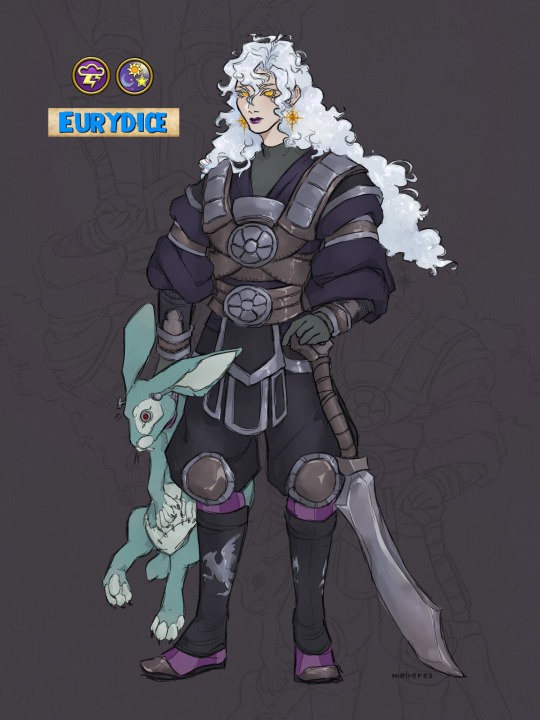
wizzy was down for maintenance so I drew my Young Wizard while I (impatiently) waited
#chickenscratch#w101#wizzy101#wizzy fandom#wizard101#the young wizard#Galathea (Eurydice)#I've reached lvl 97!!#my hc that the more magic a wizard uses the more it takes over their features physically. like the fire teachers hair or#those black eyes on malistaire. in this case my YW hair is a cloud and becomes light or stormy depending on her mood#i call her Galathea but you cannot choose that name in game so i go by Eurydice instead <//3#not that it matters considering none of the npcs call you by name anyway dskjafjd#the frankenbunnys name is Gigi. i love her shes great she heals me and freaks other players out lmao#dont remember any of the lore surrounding the frankenbunny so my idea is that Gigi is a botched nercomancy attempt by my YW#half stuffed animal. half actual hare#Galathea had a bad mental health episode early into arc 1 and Made herself a Friend#anyway don’t let diviners perform necromany you get THAT#i realise now the words i was looking for were ‘living taxidermy’
151 notes
·
View notes
Text

Drawing undertale for the memories
Click for better quality also 😤
#artists on tumblr#digital art#pixel aesthetic#undertale#frisk undertale#chara undertale#wanted to try cell shading cause I've always been a rendering bitch#drawing silly proportions saves lives#anywasy#I remember back when I was in the fandom I used to draw frisk and chara with very femminine features#I was small and didn't know abt non-binaries#thinking abt it makes me cringe#also I considered frisk as the player so I kinda projected myself into them more than seeing them as a character#we grow up tho#real growth is realizing chara wasn't an evil demon and just#a literal dead child lmao#I like the light I wanted a warm feeling#fits aren't so accurate but shh#they're literally 20 pixels on a screen let me do my thang#very proud of it#11 yr old me would be happy :)#martyryo
40 notes
·
View notes
Text
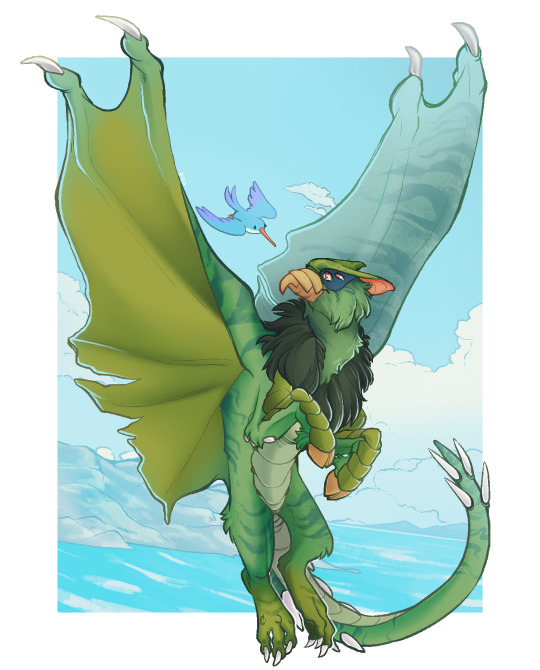
caw 🦅
#neopets#neotag#neoart#eyrie#mutant#vin doods#I can't beat the allegations that i doodle dnd creatures on a daily with this one huh#god i love mutants eyries so much i'm sorry i gavehim more draconic features but uGH;#what great colours lmao#I also gave inverted knees to the hooves cause i aint doing whatever neos doing#can you tell i have a thing for dnd and dragons in general im so sorry JAKLSDF#also in topic i've been so wanting to make a neo player's manual for so stupidly long its insane#might actually do it at one point#i had species and proficiencies and everything at one point i think its all gone lol#also for a fact that i'd be a me-thing for the most part#like i'd be the only one wanting it or playing according to it#my other friends none like neopets so yeah#god do i want to dm a neopian adventure i have tons planned lmao#but oh well#i'm super greatful for all positive commenta ad every like and reblog you guys ave given meeeee#i sound like a broken record but i swear i try to not leave this blog for long but i always read your tags and crack up to them sajhas#i know i've left a couple of you on read that actually wanted to know about my characters BUT IM SO SORRYYYY#my master's taking so long and everytime there's something new and have to rewrite and replan everthing everyday i hate it here#but i will do it#i know i will#both the lore writting and my thesis HASJKHASJS#anyways if you're still reading dont be afraid to shoot up a couple of messages! It might make this blog less dead
63 notes
·
View notes
Text
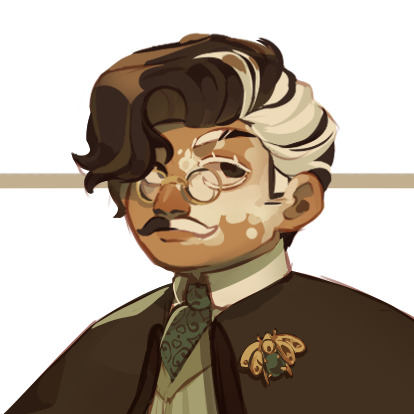
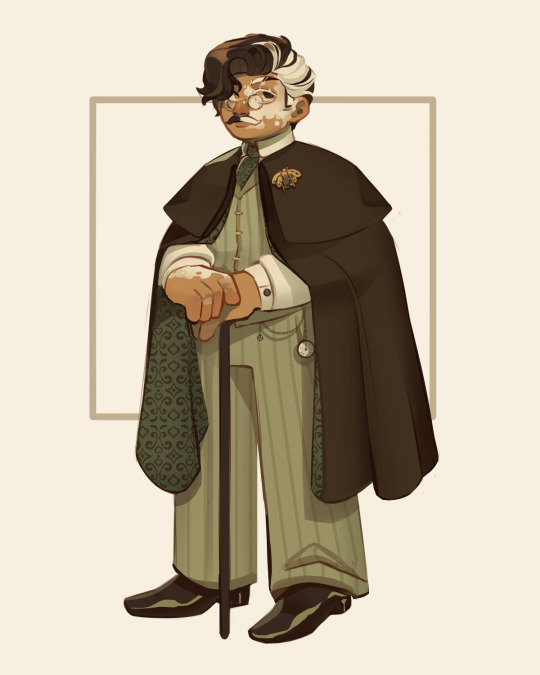
"Uh- I'm Arnold. Bennett. It's profoundly difficult to get your lifes works and studies accepted if your name isn't... yes, oh! Are you a fan of moths, sir?"
NEW RDR2 OC!! a reclusive, clumsy entomologist and bug collector; cooped up in his study of uniformed clutter
#i drew him on such a tiny file 😭😭DIDNT THINK ABT IT im so used to drawing less detailed big headed trolls BWHAHA#I'm still figuring out where he's from and his lore!#he's definitely from south asia... I'm leaning towards him originally being from Sri Lanka#which I BELIEVE was called Ceylon at the time under british rule#im looking forward to spending some time on researching this further before coming to any conclusions. for now his backstory isss vague#and practically nonexistant#he now lives in Saint Denis! if he was in game his study would be accessible#likely through a greenhouse similar to Algernon's encounters yknow!!#some stained glass windowss lots of lamps and dark academia inspo... also agitha twilight princess inspired#he's very socially awkward and clumsy#used to being a recluse and submitting his findings and works semi-anonymously through his name but without a face#so when he encounters arthur or john OR the player if in online he's VERY surprised and even clumsier#but extremely enthusiastic to share his passions#LISTEN I'm playing rdr2 for hours almost every day but I can't tell if insects are studyable#IF it was a feature THIS MAN!!! would be the one to send you on missions related to it ESPECIALLY online#ANYWAY!!!! these r things that have instantly come to mind for him!! I hope I can develop him a little more with time and research#red dead redemption 2#red dead redemption#rdr2#rdr#OC#original character#protagonist ocs#I NEVER POST MY OCS ON HERE i need 2 start posting them again#OH AND OBVIOUSLY he changed his name at least professionally... idk if it was legally or he just went around signing off as a different nam#unless someone asks for his original name he probably won't give it#i need 2 adjust his sideburns because theyr meant to be all white with some line definition but i forgot abt it 💀
30 notes
·
View notes
Text

go king give us nothing!!!!!
#0.txt#okay finished a run of imaginarium theater#my final verdict: its fun but i think the novelty will wear out fast and it felt super easy (tbf i'm a 1.1 player with a huge roster)#the boons felt kind of useless too i just picked some for the sake of picking some#the pose prizes don't mean much to me either#it might have also just felt super easy bc its the first iteration of it ever#like the first abyss cycles were technically super easy too at least compared to how they are today#and i think imaginarium theater just having a lot of lore attached to it also gives it room to expand/grow new features#so i hope its something hyv actively develops on and not just make tankier bosses 2.0 like abyss 👍#i totally understand why people don't like it though... we'll see how the future of this endgame content holds
28 notes
·
View notes
Text
animal jam is a lot more fun when you're rich
#seriously notp is making me RICH on ajpw#i can get like. one corruption orb per hour of playing dungeons. the super sweets prizes?? got an alpha after like 5 rounds. got soo many#rares from that too.....#and now i'm like. oh i want to play as a dragon? don't have to wait two weeks to save the sapphires! i can buy it now!!#looking for a cool specific piece of clothing for my outfit? i can just buy it right now!! without worrying about the price!!!#i'm seriously considering buying an alpha. just like. snooping on explorer looking at the different wizard hats for when i sell mines#(i'm not That rich lol)#kind of disappointing anyways. like. it's easy to grind this stuff when you're not a kid but it must take so long for kids to do this!!#most of the people in this game get rich by paying money!! and like#i was always a nm on classic and while they are definitely more pay to play it was like. you could have so much fun and still be poor#play wild it's like. you do get all these features but so much of it is focused on Buying. like the only non purchase stuff i can think of#is crafting ???? and the phantom dungeons.. and the minigames. and talking to people i guess.#but like honestlyyy people only really care about the items and getting items and what items are coming out next month?? and what animals??#what new effects can i get for my pets for my items??? AUGHHHHHHHHHHHH#idk. idk. i know animal jam is far past its glory days and it needs to do this to survive. and i definitely do not want this game to die.#but it is really going full capitalism mode. and i think the content and the players and the devs are really suffering from that. idk.#jamblr#i do really enjoy doing the nonogram puzzles and i absolutely love the dungeons. i'm glad they give me stuff to sell. but man. i kind of ju#t wish it wasn't so much like this yknow#ramblings#bangers
16 notes
·
View notes
Text
rewatching season 4 really made me appreciate kita so much like he has such stability and i guess simplicity is the best word as the rest of the characters of haikyuu are so chaotic and overwhelming. i admire his logical thinking and dedication to routine, cleanliness, etc and i’d really like to implement that into my daily life. kita is realness, underrated character.
#he’s probably my fav from inarizaki#for a team featured so predominantly in s4 i honestly don’t have many strong attachments to many of the characters#i never liked atsumu who is the main player of the team in terms of challenge and time skip#but i find him irritating for the most part#but kita…kita i’d clean with him he seems like a chill guy#haikyuu!!#haikyuu#kita shinsuke#also he becomes a farmer iconic
16 notes
·
View notes
Text
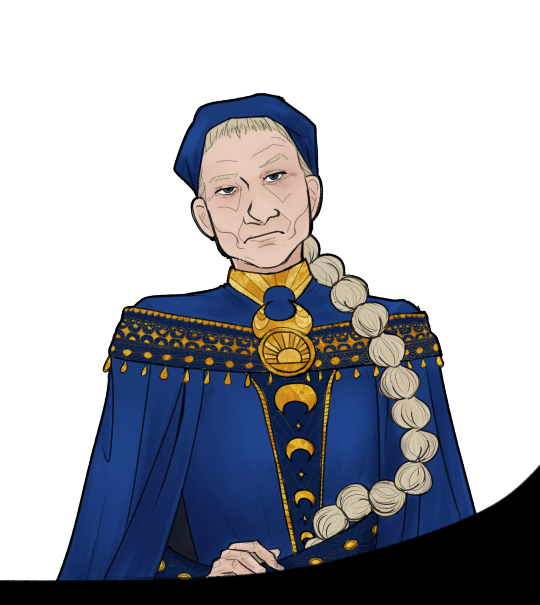
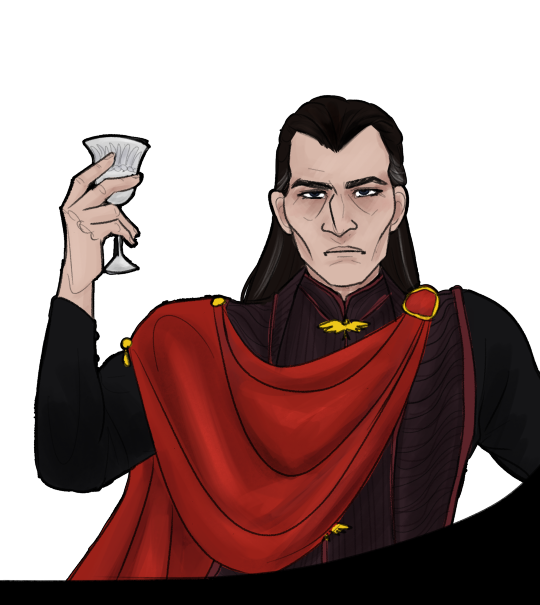
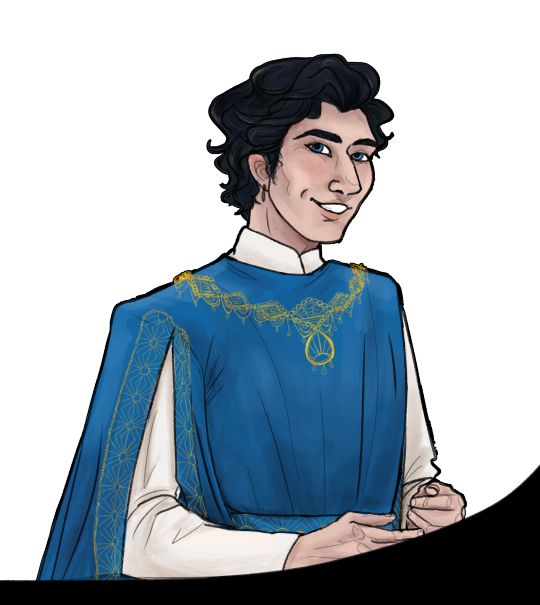


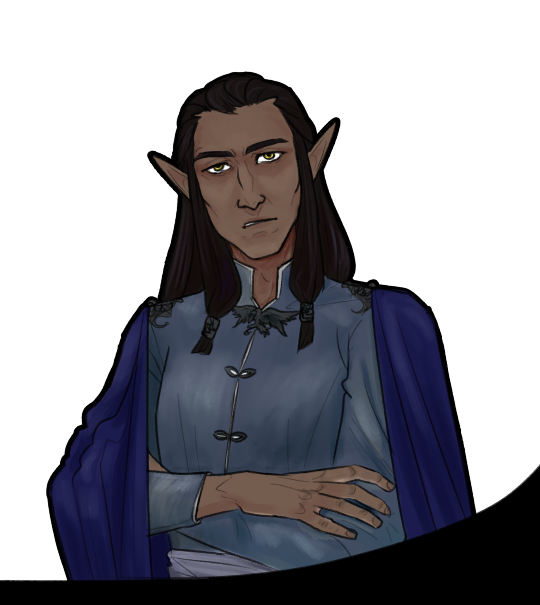
pov you're seated at a dinner table and these are the other guests wdyd
#rare art post. as promised#made for chapter four of interactive tome of strahd cuz i thought hey. why not a visual novel#alright characters in order of appearance:#lady ilona darovnya#strahd von zarovich#sergei von zarovich#tatyana federovna#patrina velikovna#rahadin#no! that's not how i like to draw strahd! i just had to finish it in approx 30 minutes before the session#rahadin is specifically young here that's why he's missing some of his features#i imagine he got his fun forehead scar at a later date than this#also if anyone clocks what outfit sergei's is heavily inspired by no you didn't. unsee it now.#patrina#my beloved#i love her so much and also one of my players put it so well#patrina: queen of the universe#kasimir: wet tissue#ah one more tag#curse of strahd#strahdtober#strahdtober2023#cos#ravenloft#my art
71 notes
·
View notes
Text

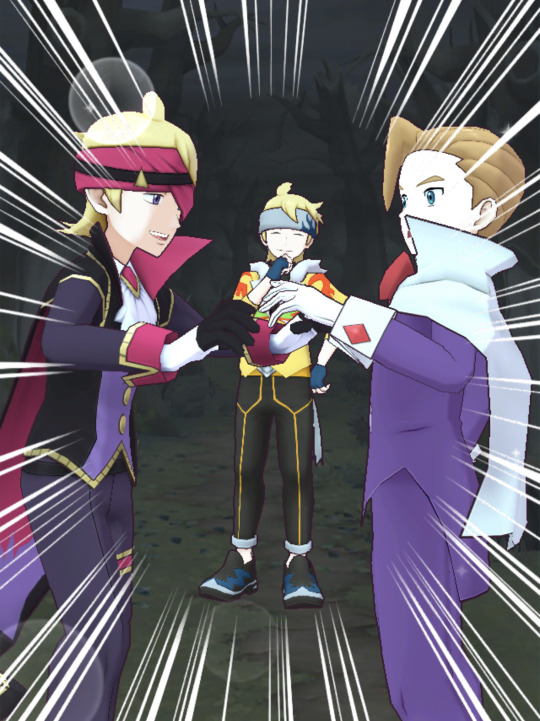
The latest pokemas update is peak, I fear
#fluff speaks !!!#surely dena realizes the sheer amount of power they’ve just given us SKDJSNDNSNDND#my entire twt tl has been filled with edits from so many players it’s actually so beautiful to see#I love me silly features like this !!!!! ✨✨✨#also I won’t spoil the new sync pairs yet but believe me so many of us went batshit DKDJSNDNNSN /vpos#pokemon#pokemas#pokemon masters#pokemon masters ex#gym leader morty#morty pokemon#eusine#mystery man eusine#eusine pokemon#sacredshipping
28 notes
·
View notes
Text
everyone on earth probably has a hypothetical farming sim in their mind's eye that they daydream about on occasion because of the unfortunate situation that despite there being like a thousand farming games released every minute only like 4 of them are any good. and i think this is fun, i think its good to keep the imagination alive. if i made a farming sim i would bring back rival marriages from the old friends of mineral town. i want to steal someones wife.
#jk jk you dont steal anyones wife or husband. but it wasnt a popular feature because people felt like they were stealing someones spouse#plus the fact that characters married eachother after a certain amount of time made them unavailable for player marriage adding a timelimit#if the player wants to get married. but thats why i want it BACK i think its 1) hilarious and 2) interesting and makes the world feel alive#NOW part of the reason (outside of it being an unpopular feature to begin with) its not in like any modern games is probably because#devs don't know how to deal with non-gender-locked marriage candidates with this#i think its easy. everyone is bisexual. not just playersexual. textually bisexual#it'll be interesting if they always have a set pairup regardless of player gender but it could also be interesting if there was like#a little algorithm to give a couple non-player pairups as options. maybe make it random#or if a dev was tooooo ambitious they could add a matchmaking system that the player could be involved with if they wanted to play cupid LO#but that seems too much for a farming game. thats usually a whole other game in itself#but yeah i think its easy. its not like farming sim marriage candidates are all that deep characters to begin with#i think itd be fine if you had a couple randomized rival marriages...... i think itd be neat#my other farming sim daydream is NO fucking combat for the love of god FREE ME from combat#that is why i like story of seasons just a bit more than stardew#stardew has so much good farming mechanics but god i hate the mines. i think its so soso sososososososo boring#i also dont really like the turn based battles in atelier games and most atelierlikes either#(well i liked it in mana khemia but that was more turn based focused than alchemy focused)#i came here to farm. i came here to make potions. i came here to micromanage numbers. do not make me battle#but that is purely a personal preference thing LOL a lot of people really love farming game combat. i dont tho <3#MY DAYDREAM FARMING SIM HAS NO COMBAT... AND YES CUCKHOLDRY#(jk jk thats not what rival marriages are. but thats how people talk about them. which is fascinating)#(unfortunately it makes me laugh so thats why i keep making jokes about it. sowwy <3 )
10 notes
·
View notes
Text

It was this or Mario Kart Wii
#localgardenweed#the weed is rambling#hetalia#hetalia merch#I LOVE HETALIA#I did feel the cashier staring at the dvds and then me#it was a little awkward but whatever living my truth#i love dvds idk if yall knew that#i prefer them over streaming in most cases cause like those services will delete random stuff#and bow you cant watch that show or movie cause its gone#not unless you have a dvd and you just play it in your dvd player#plus i like to physically own things#also BONUS FEATURES#I LOVE DVD BONUS FEATURES
12 notes
·
View notes